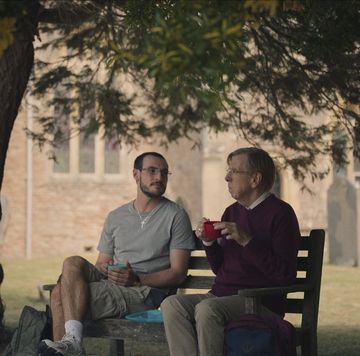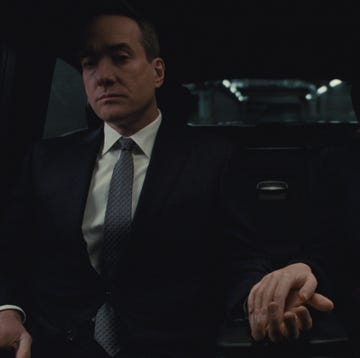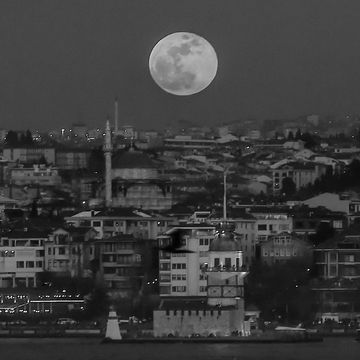On July 20, 1969, Neil Armstrong and Buzz Aldrin spent a total of two hours and 31 minutes on the lunar surface. Their time and actions on the moon were largely scripted according to the mission, but there was a brief episode when Armstrong deviated from the plan. The first man on the moon wandered over to an area known as Little West Crater. It's unclear exactly what action Armstrong took in those moments, but Damien Chazelle's new biopic, First Man, depicts what scholars have long believed the astronaut did: He tossed a bracelet with the name of his daughter, Karen, who had died from a brain tumour at the age of two, into the crater.
It's a pivotal and emotionally charged moment that takes some liberties with historical records (at least the ones that are public) in a movie so obsessively dedicated to accuracy. Screenwriter Josh Singer adapted the film from James R. Hansen's 2012 official Neil Armstrong biography, First Man: The Life of Neil Armstrong. Singer also did extensive research on his own, including speaking to a number of NASA engineers and pilots from that era.
To write the opening scene, which takes place in an X-15 aircraft, basically a really fast jet, Singer learned how to fly the plane. He went through transcripts of the actual flight, and brought his script of the scene to a X-15 pilot so he could walk through exactly what Armstrong did during the flight.
"We had to get into extreme detail about when the sky's a little bright and when the aircraft shakes and when it doesn't," he said.
But there were a few instances in the film where Singer altered the timeline for narrative purposes. The opening scene on the X-15 took place after the death of his daughter, which isn't the case in the movie. In another scene, Armstrong is forced to eject from a training flight, and he appears scratched and bruised afterward. But the way it actually happened was Armstrong bit his tongue so badly he couldn't talk for a few days afterward.
So what about the bracelet scene on the moon? How accurate is that moment? According to Singer, the bracelet scene comes from conjecture in Hansen's book about Armstrong.
"After four years of research and extensive conversations with Neil and [his ex-wife] Janet, and sister June, and Neil's kids, Jim Hansen basically starts to have this hunch that maybe Neil left something of Karen's on the moon," Singer told me. "Part of the reason is because ... leaving mementos for loved ones or lost ones is something astronauts did."
For instance, Charlie Duke, who in 1972 became the tenth person to walk on the moon, left a photo of his family there, according to Singer. Buzz Aldrin brought a pouch that belonged to the Apollo 1 astronauts as a memorial to them. That got Hansen wondering whether Armstrong left something for Karen on the moon.
"So [Hansen] asked Neil for the manifest for his PPK, personal property kit," Singer explained. "Neil claimed that he had lost it, which we now know is not true because when Neil's archives were donated to Purdue, they have that manifest, which is actually under seal until 2020."
Hansen thought it was very out of character for Armstrong to have lost such an important possession, so, according to Singer, he asked Armstrong's sister, June Hoffman, whether her brother had left something for Karen on the moon. June's response: "Oh, I dearly hope so."
"Nearing the bar we were setting for ourselves in terms of accuracy, I never would have felt comfortable doing that on my own," Singer said. "But hearing that it's good enough for Jim, and good enough for June, it was good enough for me."
So, it wasn't fully a Hollywood-ised version of the moon landing. It is more of an educated theory. And even then, it helps make the case that First Man is one of the most realistic movies about space travel ever made.
Matt Miller is a Brooklyn-based culture/lifestyle writer and music critic whose work has appeared in Esquire, Forbes, The Denver Post, and documentaries.














